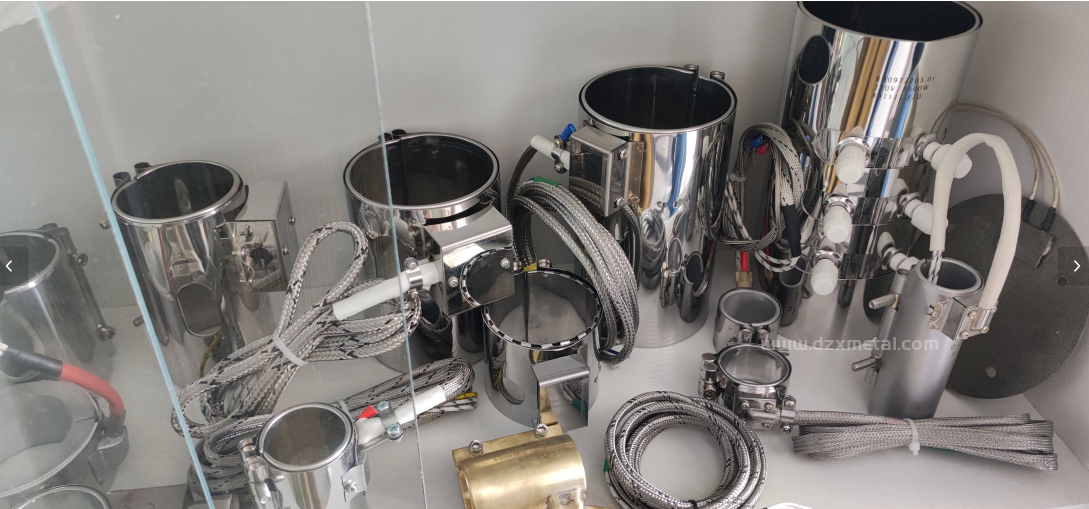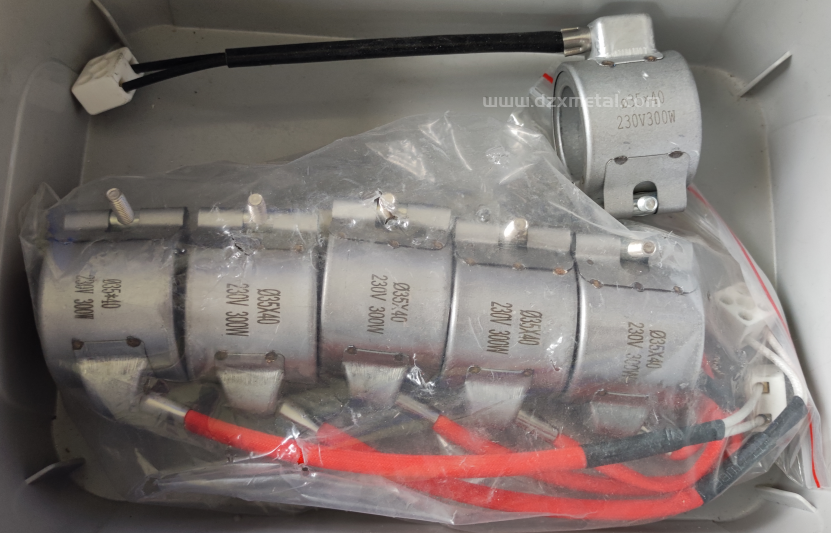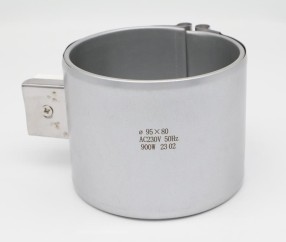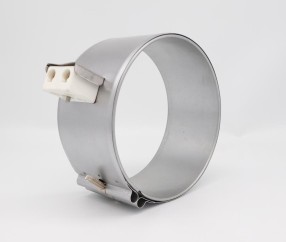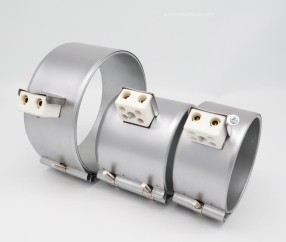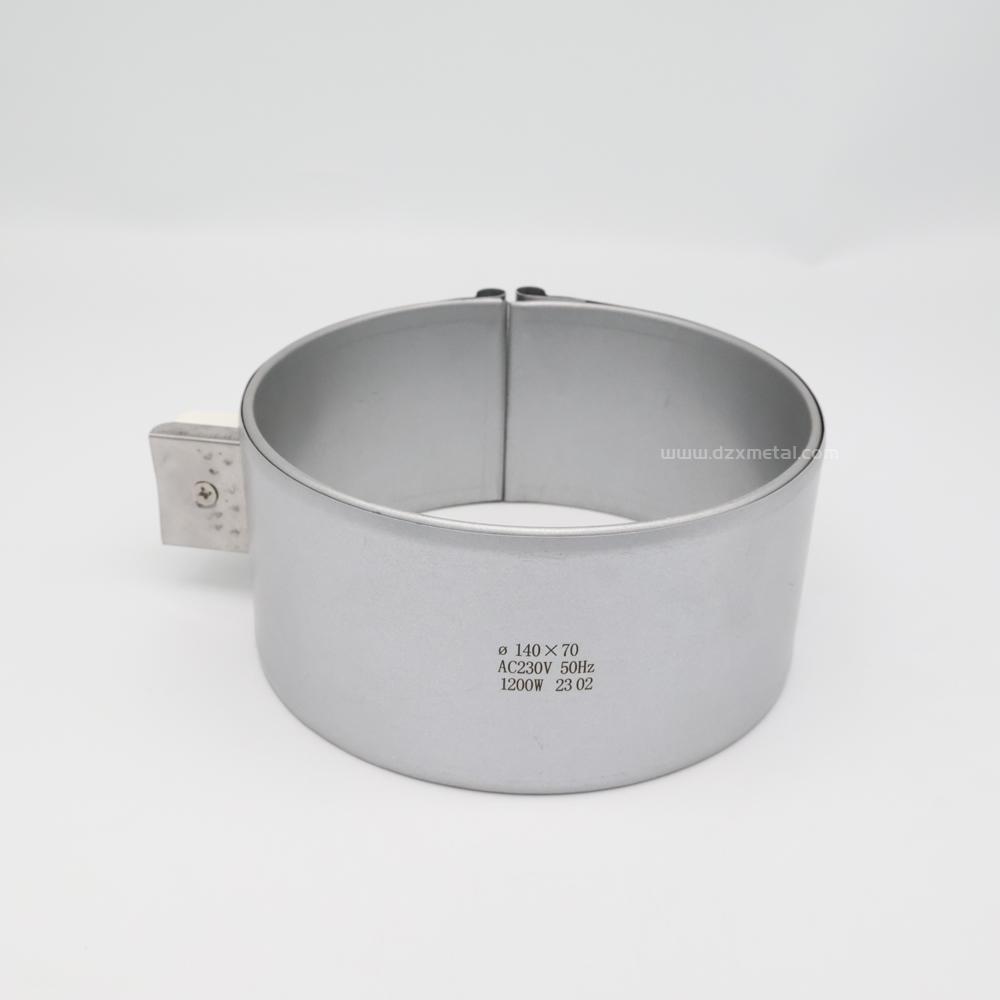
Electric Industrial Extrusion Mica Band Electrical Heater Stainless Steel 304 Round Shape
- Product Details
MICA Band Heater
The heating principle of a MICA Band Heater is based on electrical resistance heating. Its core component is the mica sheet, a natural mineral known for its high-temperature resistance and excellent insulation properties. The mica sheet has a layered structure with weak bonding between layers, which provides good electrical and thermal conductivity.
When electrical current passes through the mica sheet, heat is generated due to the internal electrical resistance. This heat is produced by the interaction between the current and the resistance of the mica sheet, following Joule's Law: heat equals the square of the current multiplied by the resistance and time. As current continues to flow, the mica sheet generates substantial heat and transfers it to objects in contact through thermal conduction, resulting in heating.
The heating principle of the mica heater is also related to its special structure. Typically, a mica band heater consists of mica sheets, wound wire, insulating materials, and a metal casing. The wire is fixed onto the mica sheet with insulating materials to form a heating circuit. When current flows through the wire, it produces evenly distributed heat across the mica sheet, achieving uniform heating. The metal casing helps secure the heater and dissipate heat, ensuring stability and safety during operation.
Advantages of Mica Band Heaters:
High Temperature Resistance: Mica can withstand temperatures up to 1000°C, making it suitable for high-temperature heating applications.
Uniform Heating: The large mica surface area provides stable and even heating.
Versatile Design: Mica sheets can be cut into various shapes, accommodating different heating needs.
Limitations:
Higher Cost: Mica is relatively expensive, leading to higher overall costs.
Slower Heating Speed: Mica heaters may take some time to reach the desired temperature.
Fragility: Mica sheets can be brittle and prone to breakage, requiring careful handling and maintenance.
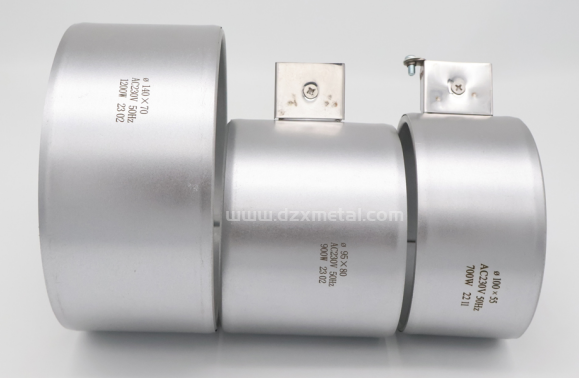

Applications of Mica Band Heaters
Plastic Processing:
Extrusion: Heating barrels of extruders to melt and process plastic materials.
Injection Molding: Ensuring consistent temperature for melting plastic before injection into molds.
Blow Molding: Heating the parison to the right temperature for shaping plastic bottles and containers.
Metal Processing:
Annealing: Used in metal heat treatment processes to relieve stress and alter physical properties.
Preheating: Preheating metal components before welding or machining.
Packaging and Food Processing:
Sealing Machines: Heating elements for sealing packaging materials.
Food Processing Equipment: Maintaining precise temperatures in equipment like food cookers or dehydrators.
Laboratory and Testing Equipment:
Heat Controllers: Used in lab equipment to maintain specific temperatures during experiments and tests.
Textile Industry:
Fabric Finishing: Heating elements for processes like heat setting and curing fabrics.
Chemical Industry:
Reactor Heating: Maintaining temperatures in chemical reactors and mixing vessels.
Advantages of Mica Band Heaters:
High Temperature Resistance: Can operate at temperatures up to 1000°C (1832°F), suitable for high-temperature applications.
Uniform Heating: Provides even heat distribution around the cylindrical surface, ensuring consistent processing quality.
Energy Efficiency: Mica insulation reduces heat loss, improving energy efficiency and reducing operating costs.
Durability: The mica and metal construction withstands harsh conditions, including high temperatures and exposure to chemicals.
Fast Heating: Quick to reach the desired temperature due to efficient heat transfer properties.
Customizable Design: Can be manufactured in various sizes and shapes to fit specific application requirements.
Thermal Conductivity: Excellent thermal conductivity of mica enhances heat transfer efficiency.
Easy Installation: Designed for straightforward installation on cylindrical surfaces with clamping mechanisms.
install of mica heater:
Choose Location: Select a spot with adequate ventilation and away from flammable materials.
Mount Heater: If wall-mounted, secure the brackets to the wall studs. For free-standing models, place the heater on a stable surface.
Connect Power: Plug the heater into a grounded outlet or hardwire it if required. Ensure the power source matches the heater’s specifications.
Test Function: Turn on the heater and check for proper operation.
MICA Band Heater Deatils:
